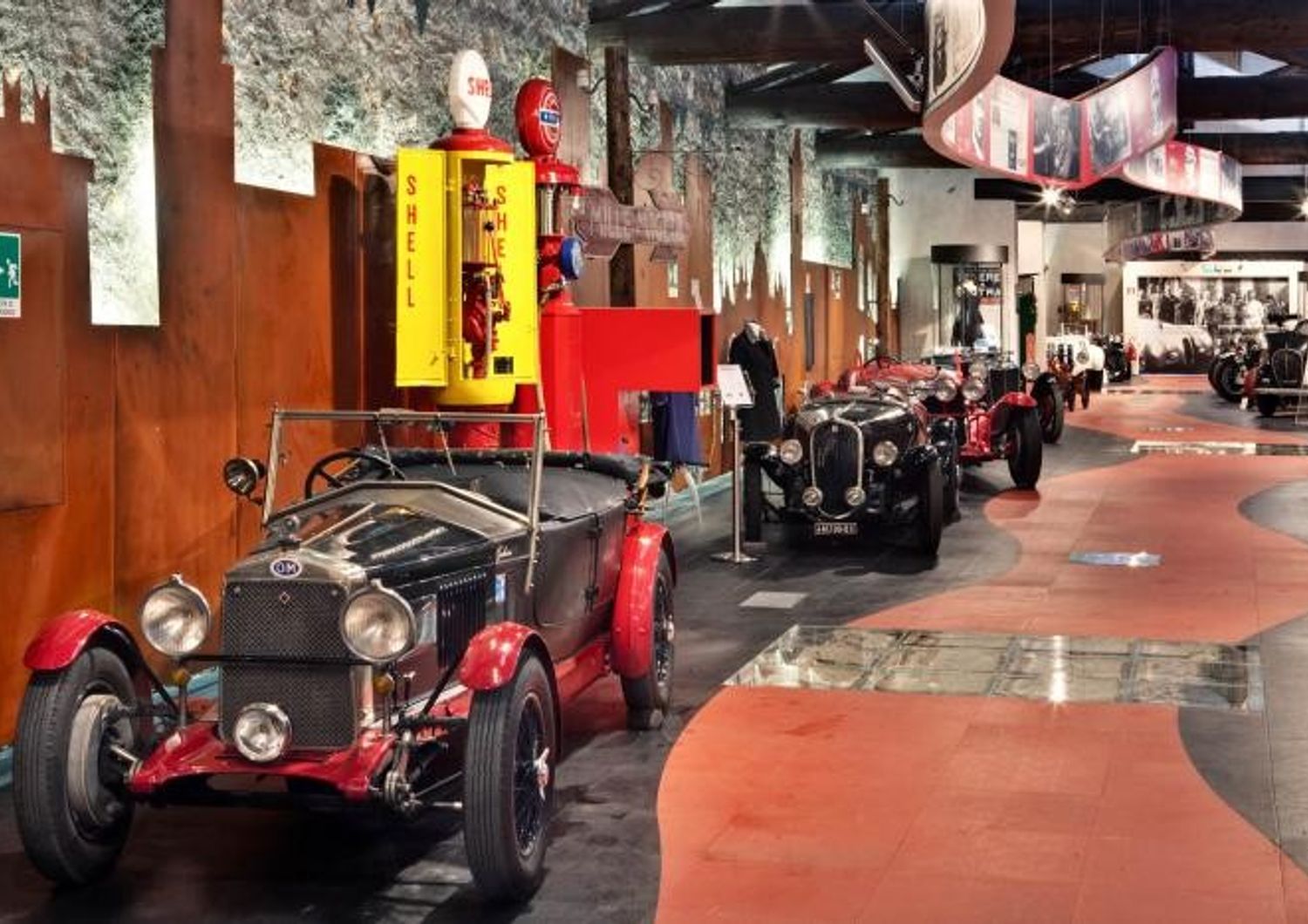Millemiglia: the 90th anniversary show is revamped with new cars


Milan - The "90 Anni.1000 Miglia" show, being held at the Mille Miglia museum in Brescia celebrating the 90 the anniversary of the Mille Miglia race and running until January 2018, has been revamped with a dynamic rotating schedule displaying a string of new classic cars. The cars that have recently replaced previous ones include the 1935 aerodynamic Fiat 508 CS Berlinetta M.M., chassis 508S076019, from a Swiss collection, which won 14th place in the Mille Miglia race held in 1936, with Alberto Comirato at the wheel and his wife Lia Dumas as the co-driver, as well as the 1950 Giaur 750 Sport, chassis BT006, driven by Luigi Musso in the 1952 race.
Also featuring at the show is the 1952 Fiat 8V, chassis 106.000004, which took part in four Mille Miglia races held between 1952 and 1955 and gained 23rd place in the 1953 race driven by Supremo Montanari. Over 50 cars have passed the baton in Brescia's great car race, and in total they have run in over 70 editions of Italy's most beautiful road race. Some of the cars on show have taken part in as many as 10 pre-World War II races, including the first edition of the Mille Miglia Gran Prix in 1940. Others have participated in some seventeen editions between 1947 and 1950, with as many as 6 running in the 1949 race alone.
Between1951 and 1957, the cars on display have raced in some 44 editions, and 8 of them ran together in the 1952 race and 10 in the 1955 race.In the coming weeks another exceptional car will be joining the Mille Miglia museum exhibit in Brescia from Holland: the Cisitalia 202 Spyder Sport Special made in 1947 (Garella car body), chassis 002S, which ran the Mille Miglia in 1947 driven by Eugenio Minetti and Pietro Facetti carrying number 172 and taking 4th place overall. It is the prototype "sister" model of the car driven by Tazio Nuvolari in the same race, which took second place and led subsequent models to being dubbed "Spyder Nuvolari". Joining the show in September straight from Australia will be the Fiat 8V (Zagato) chassis 106.000059 that ran the Mille Miglia in 1955, and again in 1956 taking 37th place with Aurelio Pellegrini at the wheel. It is the third of only three models from the Zagato pre-production and which boasts an impressive sporting career.
"The real challenge has been the global census of the cars that have run the Mille Miglia, a huge task that is still ongoing. We have tried to create a link between past and present, and technology which is part and parcel of the show helps us to engage a wider audience and to promote the history of the worlds most beautiful race," explains Binelli, who added, "The mission of the Automotive Masterpieces exhibitions lab is to provide digital access to the motor car heritage in order to promote the exchange of ideas and knowledge and to expand historical research." "It is a privilege for us to see so many masterpieces gathered together in our museum spaces," said Vittorio Palazzani, president of the Mille Miglia museum. "There are many visitors coming to the exhibit every day," he added, "and its great to see how this digital method is attracting so many young people as well, who can thus get to know the history of the legendary Freccia Rossa in a totally innovative technological mode.
Through this exhibition we are forging new links with international collectors and, thanks to their confidence and their cars, a visit to the museum will always be a new and exciting experience."The organization of the exhibition was made possible thanks to the special partners Chopard and Zagato, the main sponsor OMR Automotive and the sponsors AGI, Ambrosi, Camozzi Group, Cembre - Press Fit, Finarte, Ivar, Streparava, and Zurich. The exhibit is open daily from 10 a.m. to 6 p.m.